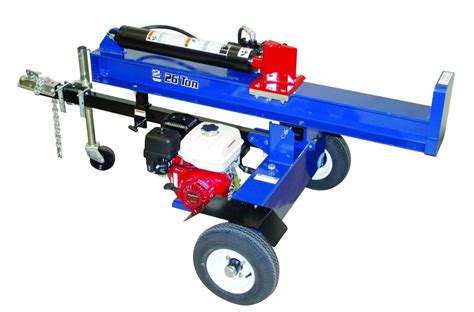Log Splitter Rental Prices Near You: A Comprehensive Guide
Finding the right log splitter for your firewood needs can be a challenge, especially if you only need it for a short period. Renting a log splitter offers a cost-effective solution, but navigating rental prices can feel overwhelming. This guide breaks down the factors influencing log splitter rental costs and helps you find the best deal near you.
What Factors Influence Log Splitter Rental Prices?
Several factors contribute to the fluctuating prices of log splitter rentals. Understanding these will help you manage your expectations and negotiate better deals.
1. Type of Log Splitter: The most significant factor is the type of splitter you need. Horizontal splitters are generally less expensive to rent than vertical splitters, which offer more power and are better suited for larger logs. Electric splitters are usually cheaper to rent than gas-powered models, but they lack the power of their gas counterparts.
2. Power and Capacity: Larger, more powerful splitters with higher tonnage ratings (measuring splitting force) will command higher rental fees. Splitters capable of handling larger diameter logs will also be more expensive. Consider the size of your logs when making your choice; renting a machine that's too small will be inefficient and frustrating.
3. Rental Duration: Rental prices are usually calculated daily, weekly, or monthly. Generally, you'll receive a discounted rate per day if you rent for a longer period. Weekly rentals are often the most cost-effective option for most projects.
4. Rental Location: Rental prices vary geographically. Rural areas with higher demand for log splitters might have higher rental rates compared to urban areas. Competition among rental companies also plays a role; a region with many rental businesses might have lower prices due to increased competition.
5. Time of Year: The demand for log splitters peaks during the fall and winter months when people prepare firewood for the cold season. Expect higher prices during these periods.
6. Additional Equipment: Some rental companies might offer additional equipment such as log carts or safety gear at an extra cost.
How to Find the Best Log Splitter Rental Deals Near You?
Finding the best deal requires some legwork, but it's well worth the effort.
1. Online Searches: Start with online searches using keywords like "log splitter rental near me," specifying your city or zip code for more precise results. Compare prices and rental terms from different companies.
2. Local Rental Businesses: Check with local equipment rental businesses, hardware stores, and farm supply stores. They often have competitive prices and might offer personalized advice.
3. Home Improvement Stores: Large home improvement retailers sometimes rent out power equipment, including log splitters. Check their websites or visit their stores to inquire about availability and pricing.
How Much Does a Log Splitter Rental Typically Cost?
Providing an exact price is impossible due to the varying factors discussed above. However, here's a general range:
- Daily Rental: Expect to pay between $30 and $100 per day, depending on the type and power of the splitter.
- Weekly Rental: Weekly rentals generally range from $150 to $400, often offering better value than daily rentals.
- Monthly Rental: Monthly rentals can be significantly more cost-effective for longer projects, but prices will vary greatly depending on location and equipment.
What are the Different Types of Log Splitters Available for Rent?
What types of log splitters are available for rent?
The main types are gas-powered, electric, and hydraulic. Gas-powered splitters are the most powerful and are ideal for large volumes of wood, but they are also more expensive to rent and require more maintenance. Electric splitters are less expensive and require less maintenance but they are less powerful. Hydraulic splitters are efficient and reliable for various log sizes, but the price varies depending on power and capabilities.
What is the difference between horizontal and vertical log splitters?
Horizontal splitters split logs by pushing them into a wedge. They are typically less expensive but can be less efficient for larger logs. Vertical splitters, on the other hand, split logs by dropping a wedge on them, making them more powerful and suitable for larger, harder woods.
How much horsepower do I need in a log splitter rental?
The necessary horsepower depends on the size and hardness of the logs you intend to split. For smaller, softer wood, a lower horsepower might suffice. However, for larger, harder logs, a higher horsepower is essential for efficient splitting. Always consider the size and type of wood you'll be processing.
What safety precautions should I take when renting and using a log splitter?
Safety is paramount! Always wear appropriate safety gear, including eye protection, gloves, and sturdy footwear. Never operate a log splitter while under the influence of alcohol or drugs. Ensure the area around the splitter is clear of obstructions and onlookers. Read and understand the rental company’s instructions and the manufacturer’s safety guidelines before use.
Remember to always shop around, compare prices, and read reviews before making your decision. Happy splitting!

